Thermaltake BlacX 5G Hard Drive Docking Station Review
Thermaltake BlacX 5G Performance
For my tests I used the BlacX 5g in a real world scenario that would be reflective of what the end user would need it for. That would be to move files from a desktop to an external drive for backups or to move files easily around different machines, or for cloning drives.
I also ran ATTO and Crystal Marks drive benchmarks with the dock attached to both a USB 3 and USB 2 controller to show the differences in performance.
This is the test bed that was used for these tests:
Motherboard: Gigabyte 790XTA-UD4 (AMD 790XNB, AMD 750SB) with a NEC D720200FI supplying USB 3.0 Support.
The Hard Drive that was used is a Seagate Barracuda 7200.12 500GB drive with 16 MB of cache.
I used a 1.3 GB MKV file which I moved between my workstation and the BlacX 5G. Here is a chart showing the results for both USB 3.0 and USB 2.0.
From the above chart we can see the huge performance difference in read and writing times of the file going from USB 2.0 to USB 3.0. Since the theoretical throughput of USB 2.0 is 60MB/sec we can see how the drive is struggling to move the file in under 50 seconds. But USB 3.0 has a raw throughput of 4 Gbit/s (500MB/S) and this should allow a SATA II drive to run closer to the speeds it would normally see when operating on a SATA controller.
ATTO was used to test raw transfer rates for both reads and writes using the defaults of 0.5kb through 8192kb transfer sizes with the total length set at 256mb.
USB 3.0
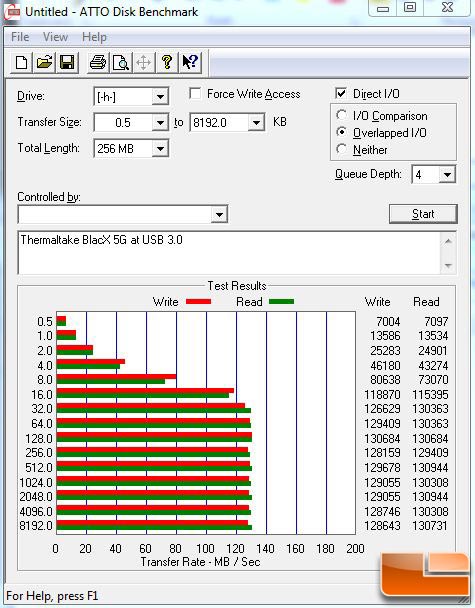
USB 2.0
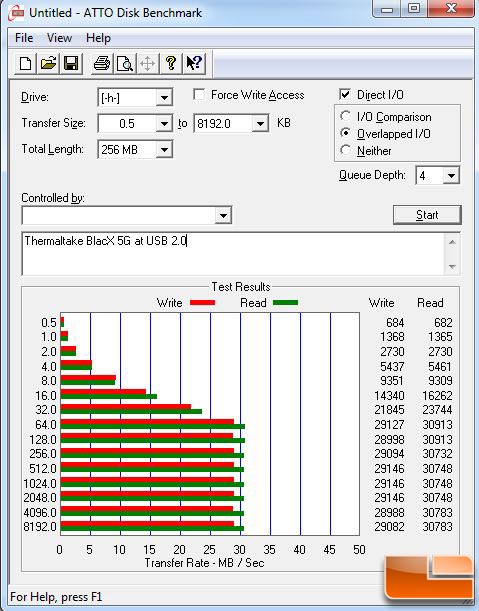
Again we can see the performance improvement of the USB 3.0 spec coming in to play here. When operating on a USB 3 controller the BlacX 5G is extremely fast compared to the USB 2 controller built into the AMD chipset.
Crystal Mark benchmarks:
Crystal Diskmark is a small disk benchmark that measures both sequential and random read/write speeds.
USB 3.0
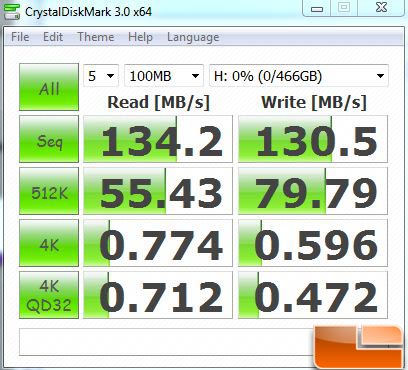
USB 2.0
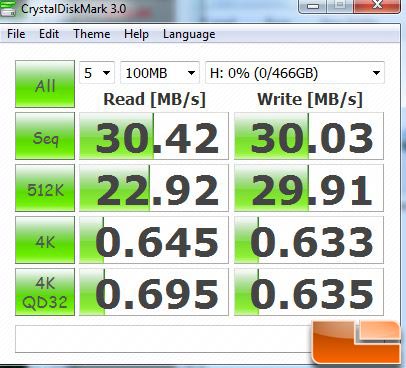
Here we can see that when operating on a USB 3 controller once again the BlacX 5G performs almost as fast as if it were connected to a SATA controller. The performance while on the USB 2 controller is still choking out at the ceiling for the bus.
The performance numbers look amazing for USB 3 but it is still a new technology. When compared to ESATA it’s almost a dead heat. However, with new driver versions coming for USB controllers, performance should improve and the Thermaltake BlacX should benefit from it.

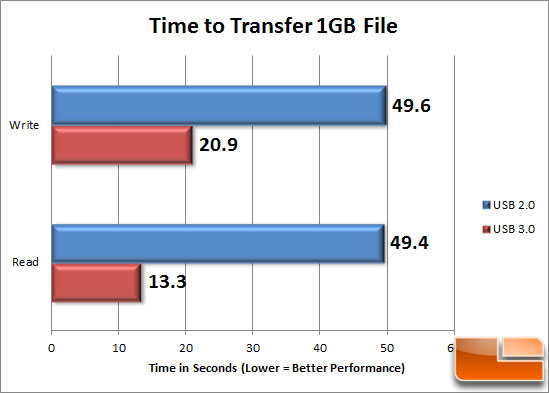
Comments are closed.